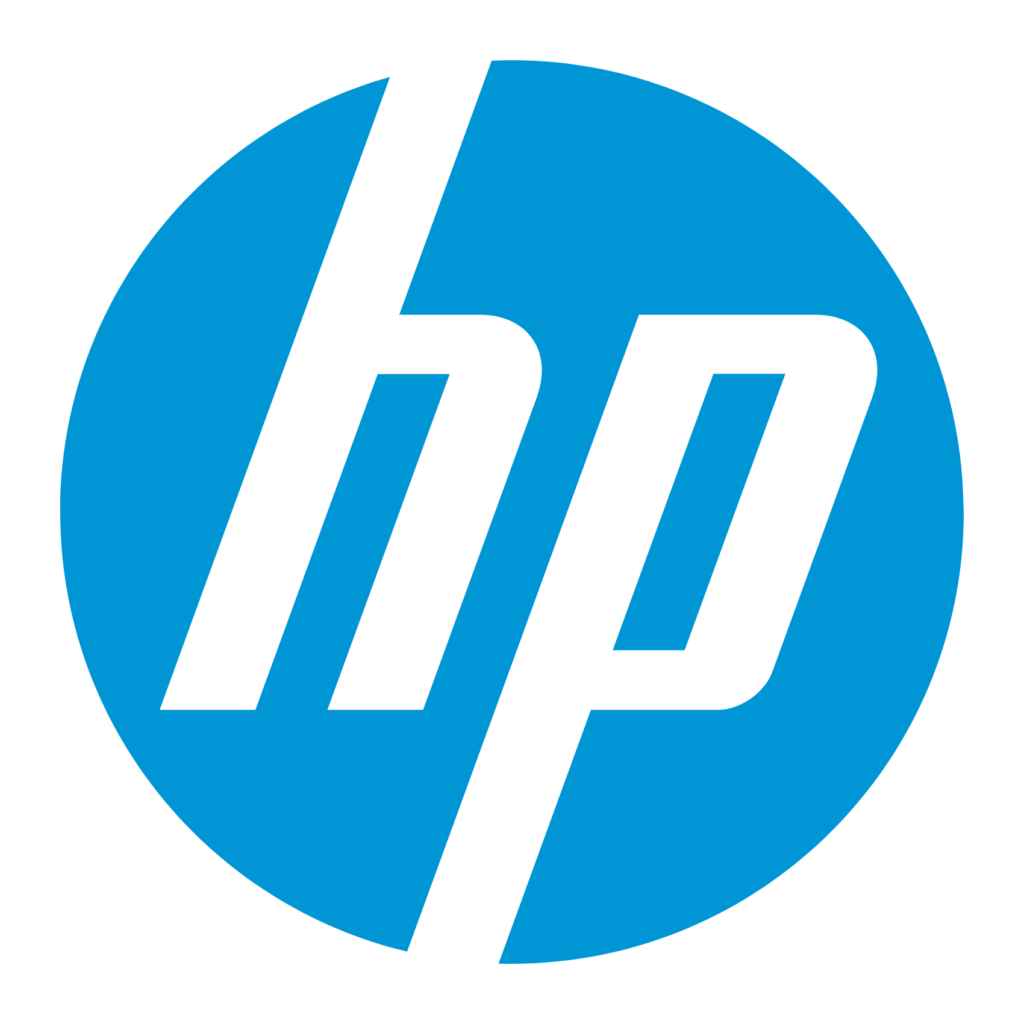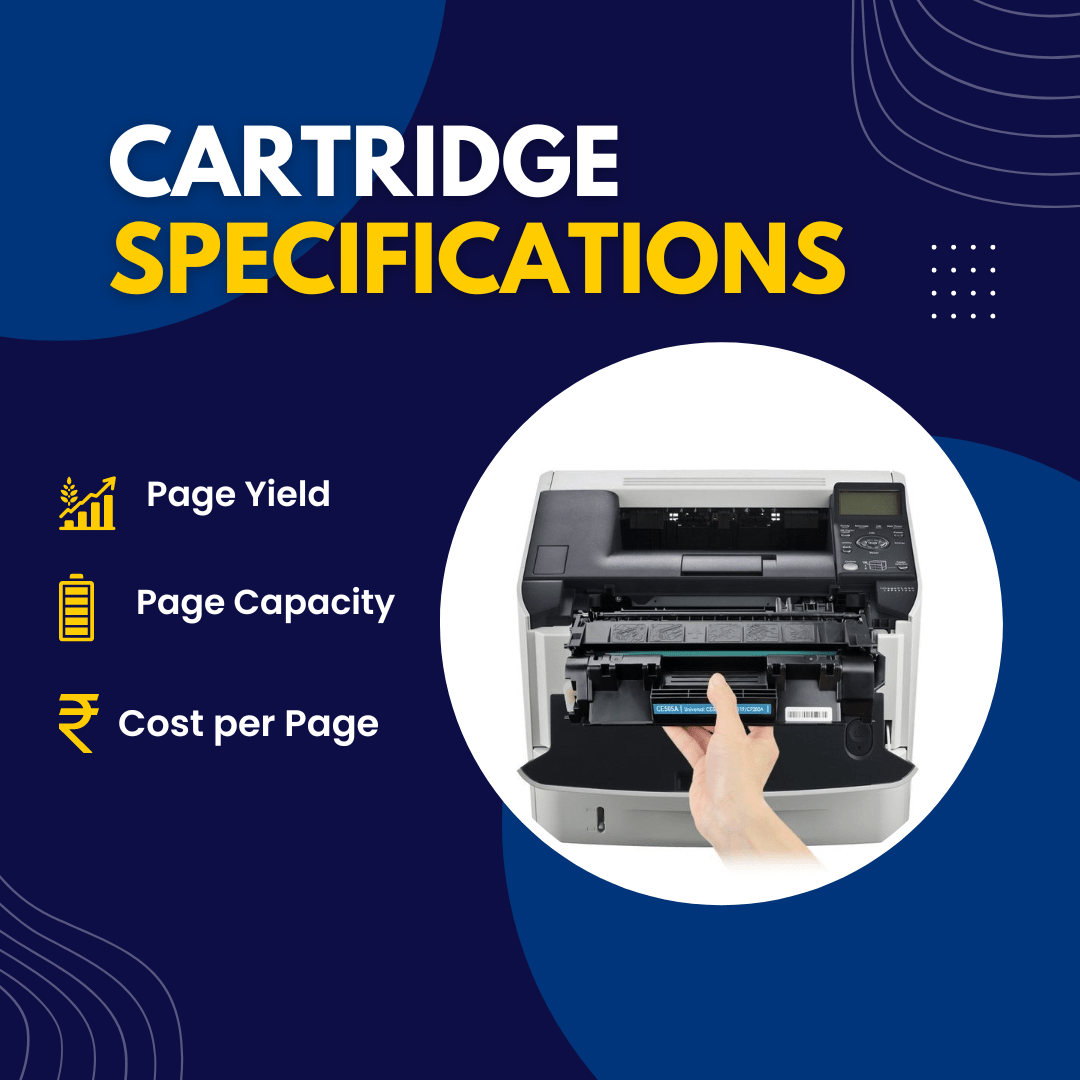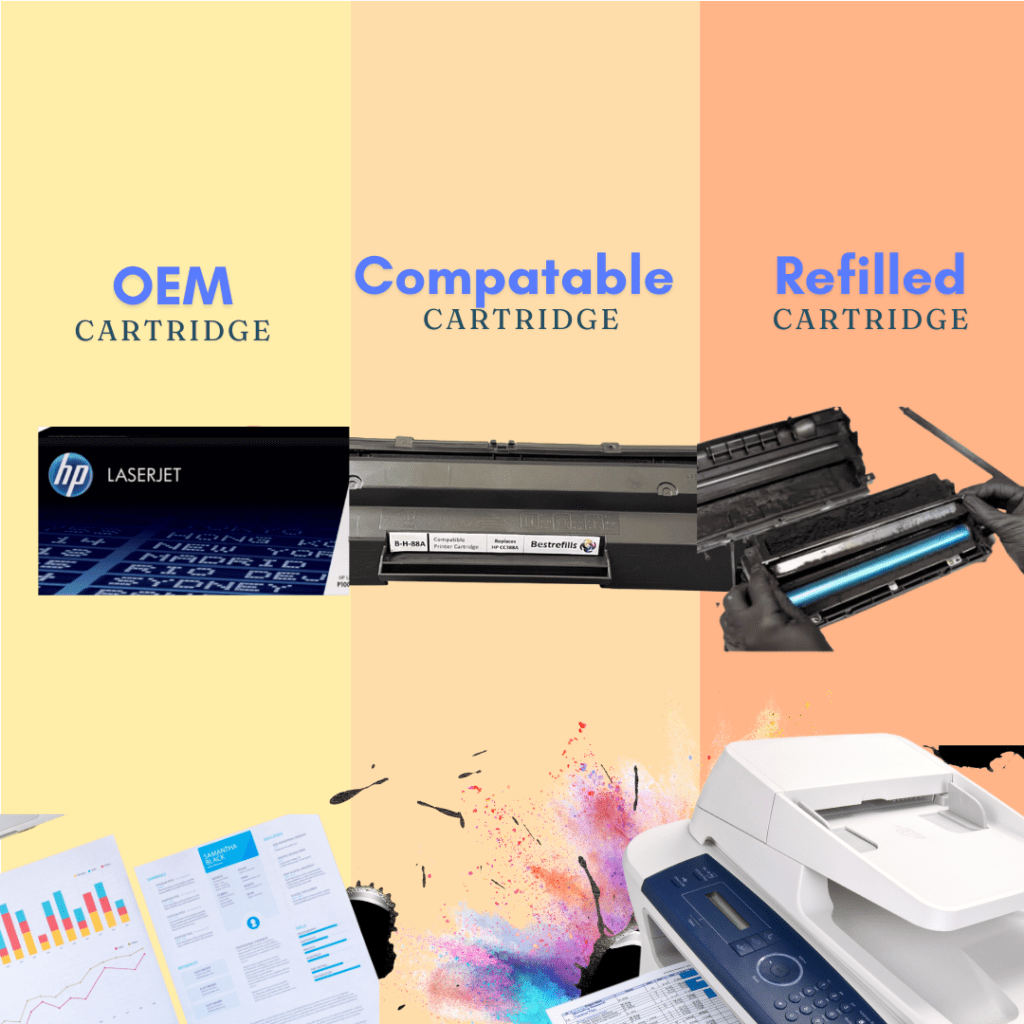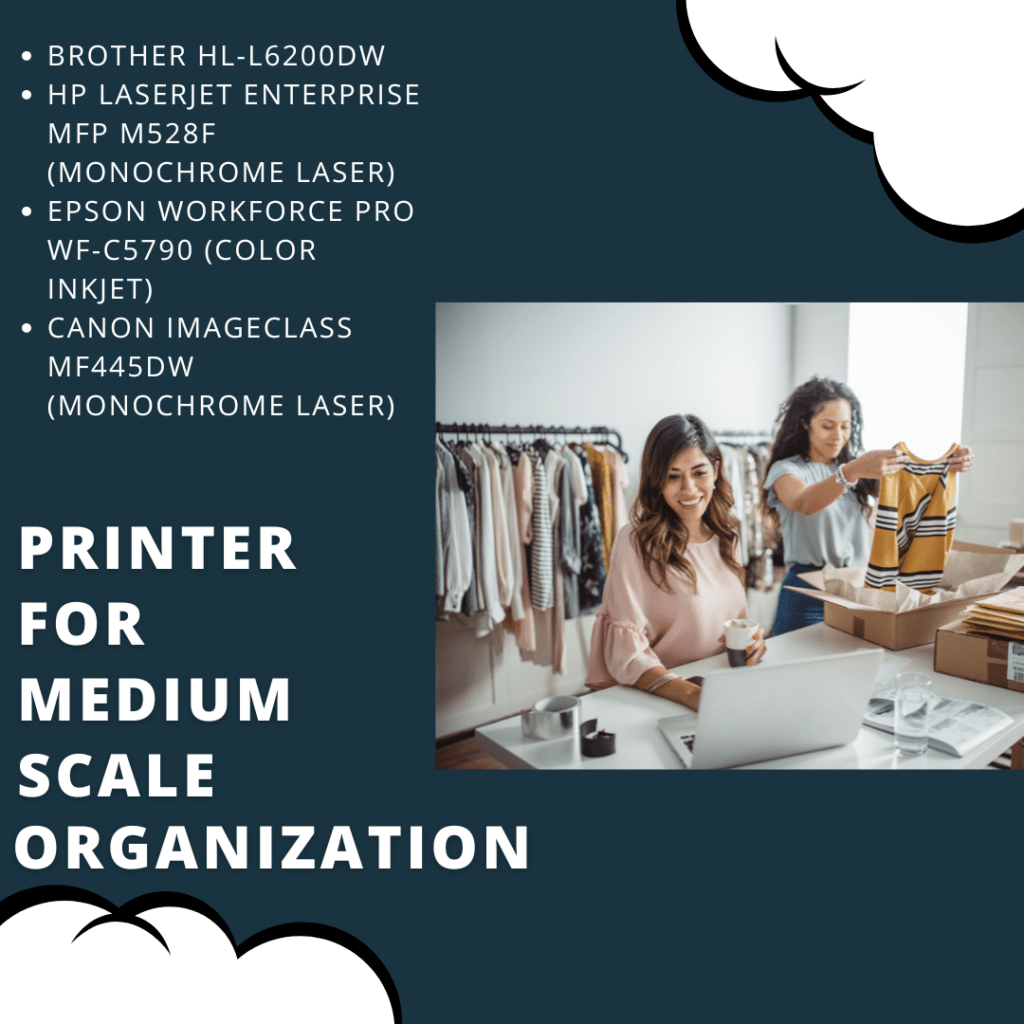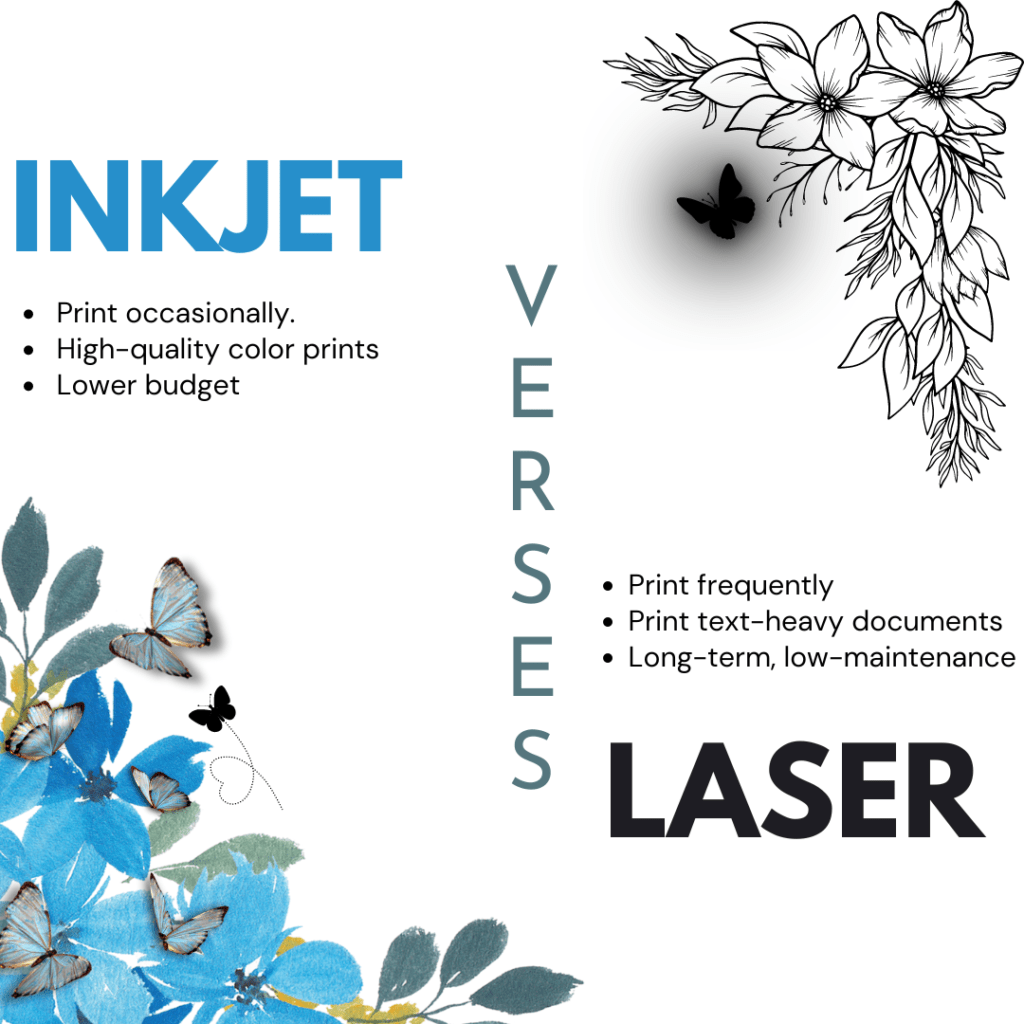Understanding Printer Cartridge Specifications: A Guide for Small Business Owners
As a small business owner or office manager, it’s important to make smart choices when buying office supplies. Printer cartridges can be a big expense, and understanding their details can help you pick the best ones for cost savings and performance. This guide will explain everything you need to know about printer cartridge specifications, including the types of cartridges, how to understand model numbers, and why yield and page capacity matter.
Types of Printer Cartridges: Inkjet vs. Laser
Printer cartridges come in two main types: inkjet and laser. Understanding the differences between them can help you choose the right one for your business needs.
Inkjet Cartridges
Inkjet cartridges are used in inkjet printers and contain liquid ink. They are typically used for printing high-quality images and documents with a wide range of colors. Inkjet printers are often more affordable upfront, but the cost per page can be higher compared to laser printers.
Laser Cartridges
Laser cartridges, also known as toner cartridges, are used in laser printers. They contain powdered toner and are ideal for high-volume printing and producing sharp, crisp text. Although laser printers and cartridges are more expensive initially, they generally offer a lower cost per page and are more cost-effective for businesses with high printing needs.
How to Read and Interpret Cartridge Model Numbers
Printer cartridge model numbers can be confusing, but understanding them is essential for ensuring compatibility with your printer. Each manufacturer has its own system for labeling cartridges, but there are some common elements to look out for:
For example, an HP 63XL cartridge is compatible with HP printers in the 63 series and is a high-yield version, offering more pages per cartridge compared to the standard HP 63 cartridge.
The Importance of Yield and Page Capacity
When choosing printer cartridges, it’s essential to consider yield and page capacity, which indicate how many pages a cartridge can print before it needs to be replaced.
Yield
Yield refers to the estimated number of pages a cartridge can print, based on standard testing conditions. High-yield cartridges (e.g., XL or XXL) offer more pages and are often more cost-effective for businesses with high printing volumes.
Page Capacity
Page capacity is influenced by factors such as the type of documents you print and the coverage area. For example, printing images or graphics consumes more ink or toner than printing text-only documents.
Choosing the Right Cartridge for Your Printing Needs
To select the best cartridge for your business, consider the following factors:
Calculating Cost per Page
To calculate the cost per page, divide the price of the cartridge by its yield. For example, HP 802 if an ink cartridge costs ₹850 and has a yield of 120 pages, the cost per page is ₹7.
Compatible vs. OEM Cartridges
OEM (Original Equipment Manufacturer) cartridges are made by the printer manufacturer, while compatible cartridges are third-party alternatives. While compatible cartridges are often cheaper, they may vary in quality and yield. Consider the following:
In conclusion, understanding printer cartridge specifications can help you make informed decisions, ensuring cost efficiency and optimal performance for your business. By considering factors such as printing volume, print quality, budget and the choice between compatible and OEM cartridges, you can confidently select the best cartridges for your needs.


